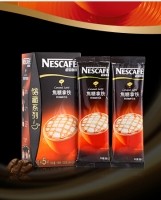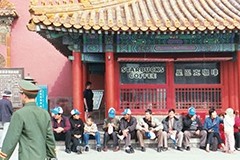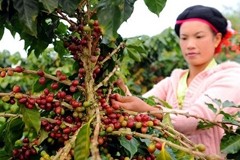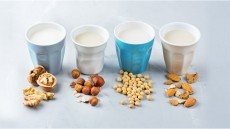Feature - China
Comfort and convenience behind the rise of China's new coffee culture
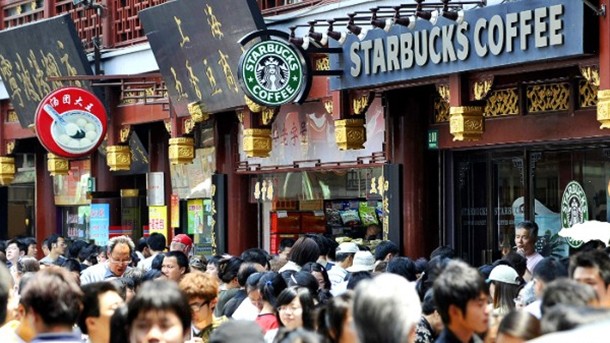
Today, tea is still the leader by a massive margin, though coffee is charging forward in leaps and bounds.
“To put it into context, the average Chinese consumer drinks just two cups of coffee in a whole year,” says Bright Wang of Daimin Foodstuff, a Fujian manufacturer of instant teas and coffees. "Just imagine what the potential would be if it continued to grow."
When Wang was at university in the small (by China’s standards) southern city of Zhangzhou, he remembers at most 10 coffee shops in the whole city.
“When I moved back a couple of years ago, there was one street alone with 10 coffee houses. That’s how things are changing, and we are starting to see real growth outside the metro cities.”
A trend towards coffee culture has developed over the last half-decade largely through the influence of cosmopolitan Beijing and Shanghai, the drivers of Chinese fashion.
“Chains like Starbucks have been pushing coffee culture onto young people, who now enjoy hanging out drinking coffee with friends in coffee shops,” says Wang.
But does this mean that young, upwardly mobile Chinese are in love with the culture or the beverage itself?
"Even in the modern generation, there are two types of people: those who drink tea and those who drink coffee,” says David Qi of Jiangsu-based Suzhou Jiahe Foods, one of Asia’s biggest manufacturers of creamers, and someone who follows beverage trends closely.
"It’s not an age-group thing; rather, it comes from how well they’ve been educated, or if they are from a traditional family. Coffee has started to become popular but it’s not everywhere.
"Coffee is just a drink, but in China it has been converted more into a fashionable lifestyle. The young metropolitan generation sees drinking tea as only appealing to older people. 'We are young, we drink coffee, not tea!’ they say.
“Even in the big cities, some people think of coffee as a way of life, not as a viable hot drink option. They think that the coffee shop trend is all about the environment, the comfort and the fashion, not the coffee itself.”
Market on the rise
According to Euromonitor’s Dana LaMendola, China’s currently low average rate of coffee consumption, in tandem with its status as the most populous nation on Earth, add up to real market potential, especially as sales of ready-to-drink coffee products are soaring.
Referring to research carried out earlier this year, she says: “Thus far, the most significant strides have occurred in the instant coffee market, which reached over US1bn in retail sales in 2012.
"However, since 2011, RTD coffee—packaged ready-to-drink liquid coffee products—has consistently boasted the strongest volume growth of any Chinese beverage category.”
The RTD coffee segment grew by 22% in value in 2012 to exceed US$414m in retail sales, says Euromonitor, and many of the drivers behind the success of this form of coffee are similar to those behind instant coffee.
With Euromonitor noting RTD coffee segment growth of 22% in 2012, to exceed US$414m in retail sales, the country now ranks as the fourth-largest global market in this segment in terms of volume, and fifth in value. Its growth is largely a result of the attributes products share with instant coffee, namely convenience and a malleable flavour profile, says LaMendola.
Fresh coffee, though, remains a niche product, and accounted for less than just US$20m in 2002. Its demand, due largely to its convenience, is mostly from recent adopters who tend to be unfamiliar with fresh coffee preparation methods and who often lack the appliances needed to make it.
“In terms of flavour, instant coffee’s ability to be packaged as a mix with sweeter and other additives appeals to the Chinese palate, which generally prefers milder, milkier coffee to the stronger, acid profiles often evoked by fresh coffee,” she adds.
“Indeed, the most popular type of instant coffee in China, which accounted for 52% of the segment’s sales in 2012, are three-in-one mixes that include a mix of instant coffee, creamer and sweetener.”
Euromonitor also found that Nestlé’s Nescafé is the dominant player in both instant and RTD markets, accounting in 2012 for half of the entire RTD market, and just shy of three-quarters of the instant market. While the brand has a global instant share of 46%, its strength in China is unsurprising, though the strength of its RTD sales in the country is very different to its global weight of just 3% share.
Cash rich and time poor
RTDs and instant products are driving coffee's ascendency, perhaps because, as we are informed often, the Chinese are becoming increasingly cash rich and time poor. While this is clearly a marketer’s dream statement, largely designed to flatter consumers into believing the hype, Qi argues that it is also reflective of the coffee market.
"People don’t have time any more to brew real coffee,” he says. "It’s just quicker and easier to empty a three-in-one sachet and add water or open a bottle. For consumers, it takes too long to grind the beans and brew the coffee. People like things that are mixed already.”
However, when pressed, he agrees that this is more by culture than necessity. Ever since Nestlé opened up China’s pre-mixed powder market with Nestea relatively recently, consumers have got in the habit of keeping things simple, he admits.
"When you see other people doing this, you do it too. Not everyone could accept another long-drawn out process like making traditional tea, therefore they choose the easiest way. Not everyone knows how to mix even instant coffee with milk and water—nobody has ever shown them the right amount of coffee powder to use, or how much milk to add.”
According to Daimin’s Wang, instant coffee volumes have been growing slowly, with an increase in consumption that is nowhere near as fast as is being found in coffee shops.
“[Malaysian brand] Old Town White Coffee has played a big part in pushing instant coffee to China. Before that, there was only one real choice over the past few years, and that was Nestlé. Now we have many more brands, both good and bad,” says Wang.
It’s safe to say that tea is not currently under any threat from the rise of the coffee granule, and its market is still growing. Indeed, China is forecast to account for half of all global growth in tea demand through to 2017, according to Rabobank, and tastes are changing among traditionalists too.
Wang, whose company also supplies tea to trade customers, says ice tea has been the packaged segment leader, though its prominence is slipping.
“The most popular tea drink is ice tea, though this in in decline because unsweetened or zero-calorie teas are on the rise as people become more aware of health issues,” he says.
“Traditional tea drinking continues to increase, though. And now young people have the opportunity to choose what they need, be it packaged tea, three-in-one coffee or traditional China tea.
“Coffee needs about 10 more years to grow before it becomes a big market in China.”

